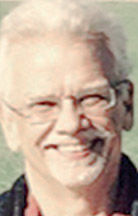Sports Column: The glorious history of Hayward Field
Published 11:00 am Saturday, January 2, 2021

- Bob BaumSports columnist
It would be difficult to overstate what Hayward Field means to the world of track and field.
With the spectacular overhaul of the aging structure now complete, it will be the site of more great competitions, beginning with next year’s U.S. Olympic Trials (pandemic conditions permitting).
It’s the latest chapter for a structure that began as a home for Duck football in 1919. A 440-yard track was added two years later.
Bill Hayward coached at Oregon from 1904 to 1947. His reputation for success was such that the new athletic field was named after him in 1921. In addition to a highly successful time coaching track and field athletes, he also served as athletic trainer and basketball coach for a time.
Hayward coached four world record holders and nine Olympians and served as a track and field coach at six Olympics.
One of Hayward’s pupils was Oregon coaching great Bill Bowerman. Whose students, in addition to many world-class competitors, included a skinny distance-running business major named Phil Knight.
My senior year at Oregon (1974-75), I lived in an apartment just across 18th Avenue from Hayward Field.
It was an era of strong dual meets in NCAA track, none more intense than when the Ducks under coach Bill Dellinger faced John Chaplin’s Washington State Cougars. The place was almost always packed.
I went on to see many outstanding performances on the historic track, including many NCAA championships, U.S. Championships and U.S. Olympic Trials.
I’d trudge up the steps of the wooden west grandstand to the press rows at the very top, a tough journey for an out-of-shape sports writer.
The Olympic Trials are among the best sporting events anywhere, in my humble opinion. It’s an all-or-nothing competition. Finish in the top three, and you’re headed to the Olympics. Finish fourth (unless you’re a sprinter in the relays) and you’re out of luck.
In my early days covering track, there were no lights at Hayward. At one NCAA meet, they had to drive cars up and turn the lights on to finish the decathlon pole vault.
No discussion of Hayward Field can be complete without talking about Steve Prefontaine, the charismatic, barrel-chested runner from the blue collar mill town of Coos Bay who everyone knew as ‘‘Pre.’’
My last year in college, I covered track and field for the student newspaper, the Daily Emerald. That meant covering lots of Prefontaine. We were in the same class, not that I knew him — at all.
But he could be breathtaking to watch run. And so many of those great races occurred at Hayward.
I remember watching one Saturday as he pulled away to beat Oregon State’s Hailu Ebba one Saturday afternoon in a stirring 1,500-meter race.
But Pre wasn’t in the mood to talk about the race. He jogged away from a handful of reporters.
After his tragic death in a car accident, Prefontaine’s name lives on in a meet held each year at Hayward.
The new Hayward is a beautiful place, judging by the photos. It is set to host the world championships in mid-2022, the first time the event will be held in the United States.
The new Hayward undoubtedly will have many thrilling track moments.
It will build on a sterling legacy built there over the last 100 years, where those who sat in those old wooden stands became the most knowledgeable track fans anywhere.
There’s now even more reason to call Eugene TrackTown, USA.





